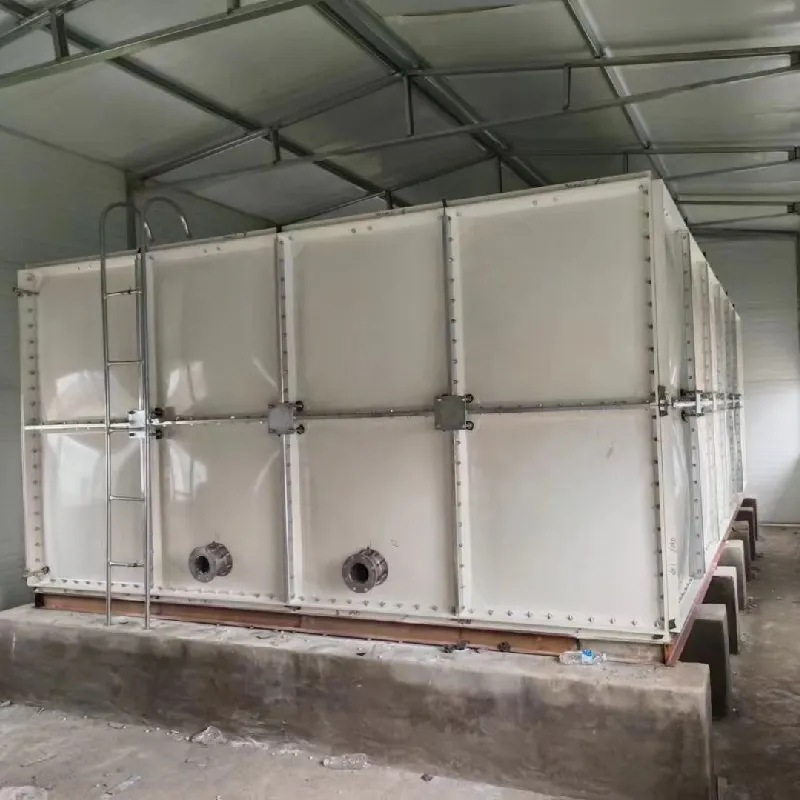loading...
- No. 9, Xingyuan South Street, Dongwaihuan Road, Zaoqiang County, Hengshui, Hebei, China
- admin@zjcomposites.com
- +86 15097380338
- Welcome to visit our website!
Water Pump Pressure Tanks for Efficient Fluid Storage and Distribution Solutions
Understanding Pressure Tanks for Water Pumps
Pressure tanks play a crucial role in the operation and efficiency of water pumps, particularly in residential and agricultural applications. These tanks serve as a reservoir of pressurized water, allowing pumps to operate more effectively and providing a consistent water supply. In this article, we will explore the function, benefits, and maintenance of pressure tanks for water pumps.
What is a Pressure Tank?
A pressure tank, often referred to as a pressure vessel, is a container designed to hold water at a specific pressure. It is typically made from steel, fiberglass, or polymer and comes in various sizes and shapes. The design includes an air bladder or diaphragm that separates the water from the air. When the pump sends water into the tank, it compresses the air in the upper part of the tank. As the water level rises, the air pressure increases, allowing water to be pushed out when the faucet is turned on.
How Does a Pressure Tank Work?
The primary function of a pressure tank is to regulate water pressure in a plumbing system. When a faucet is opened, the water flows from the tank, utilizing the pressure created by the compressed air. This mechanism ensures a steady supply of water, reducing the demand on the pump.
As water is drawn from the tank, the pressure decreases until it reaches a predetermined point, usually between 30 to 50 PSI. This drop in pressure triggers the water pump to start and refill the tank, maintaining a consistent supply of pressure. This cycling of the pump reduces wear and tear, prolonging the life of both the pump and the pressure tank.
Benefits of Using Pressure Tanks
1. Improved Water Pressure One of the most significant advantages of a pressure tank is that it stabilizes water pressure throughout the system. This results in a more comfortable and efficient experience when using water fixtures.
2. Energy Efficiency By allowing the pump to operate less frequently, pressure tanks can lead to considerable energy savings. Pumps use a significant amount of electricity when running, and with a pressure tank in place, they cycle on and off less often.
pressure tank for water pump

3. Extended Equipment Life Constantly running pumps can lead to more wear and more frequent repairs. Pressure tanks reduce the operating cycles of the pumps, minimizing maintenance costs and extending the overall lifespan of the system.
4. Noise Reduction Water pumps can be loud, especially when running frequently. With a pressure tank, the pump operates at a lower frequency, reducing noise levels and creating a more pleasant living environment.
Maintenance Considerations
To ensure optimal performance, regular maintenance of the pressure tank is essential. Here are some key maintenance tips
- Check the Air Pressure Periodically check the air pressure in the tank when it is empty. The air pressure should typically be set at 2 PSI lower than the cut-in pressure of the system.
- Inspect for Leaks Regularly inspect the tank and its connections for any signs of leaks or corrosion. Early detection can prevent more significant issues down the road.
- Monitor Water Quality Ensure that the water quality is maintained, as sediment buildup can affect the performance of the bladder or diaphragm.
- Schedule Professional Inspections It is always wise to have a professional inspect the pressure tank and pump system periodically. This can help identify potential issues before they escalate.
Conclusion
Pressure tanks are an invaluable component of water pump systems, enhancing performance, efficiency, and user experience. By maintaining these tanks properly, homeowners can enjoy a reliable water supply while minimizing costs and prolonging equipment life. Whether you are installing a new system or maintaining an existing one, understanding the role and benefits of pressure tanks can lead to smarter water management solutions for your home or business.
-
The Rise of FRP Profiles: Strong, Lightweight, and Built to LastNewsJul.14,2025
-
SMC Panel Tanks: A Modern Water Storage Solution for All EnvironmentsNewsJul.14,2025
-
GRP Grating: A Modern Solution for Safe and Durable Access SystemsNewsJul.14,2025
-
Galvanized Steel Water Tanks: Durable, Reliable, and Ready for UseNewsJul.14,2025
-
FRP Mini Mesh Grating: The Safer, Smarter Flooring SolutionNewsJul.14,2025
-
Exploring FRP Vessels: Durable Solutions for Modern Fluid HandlingNewsJul.14,2025
-
GRP Structures: The Future of Lightweight, High-Performance EngineeringNewsJun.20,2025
